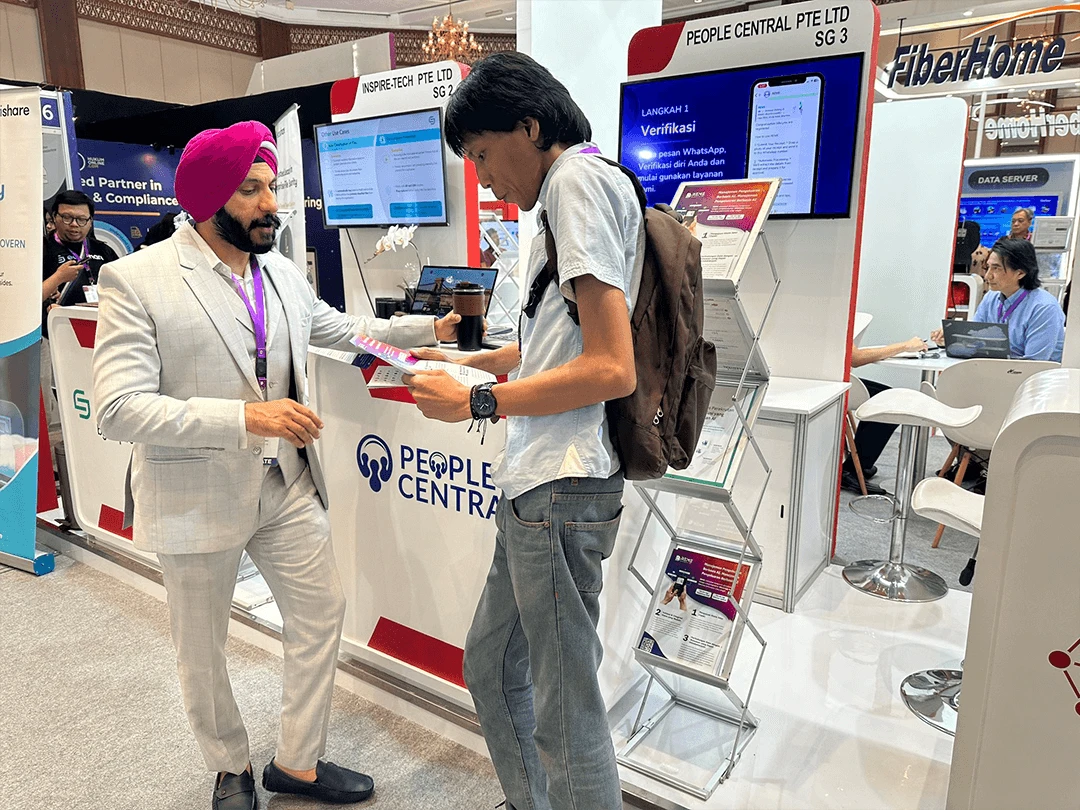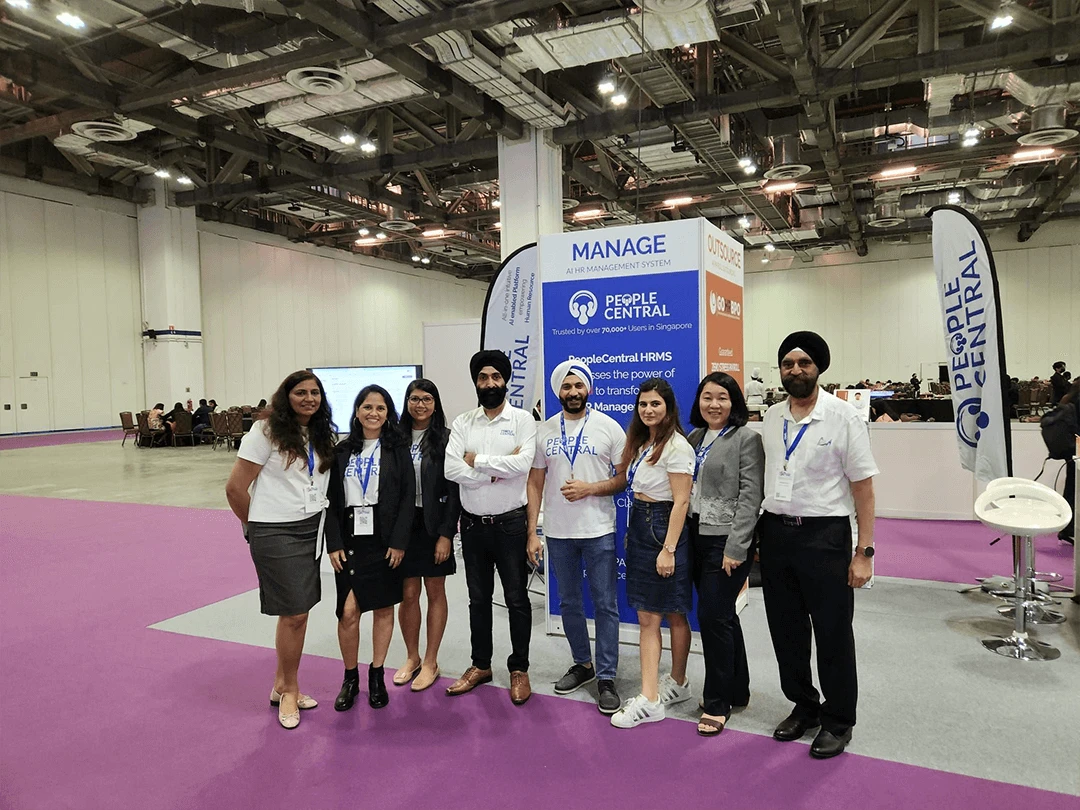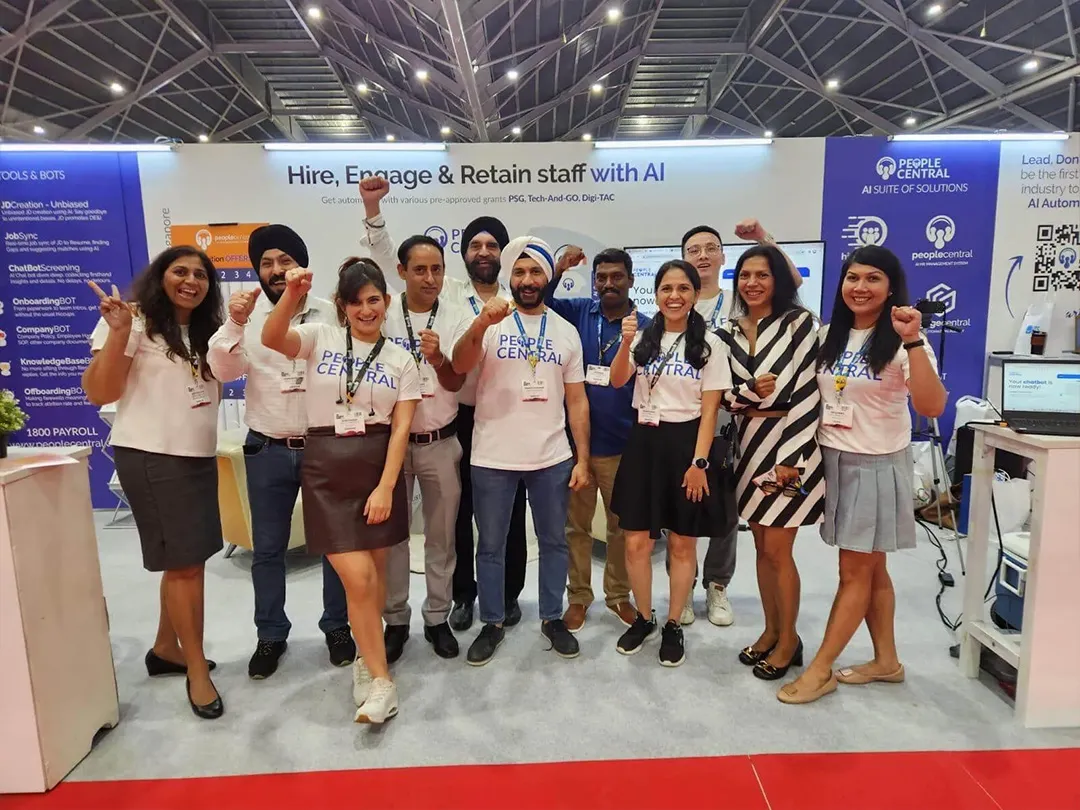Employee burnout is a major problem for both individuals and organizations. To tackle it, HR must find an effective solution. AI is the answer! By using AI algorithms in HRMSs, businesses can gain insights into worker well-being and take action to prevent burnout.
AI tech has become much more available and affordable for businesses of all sizes. By parsing data, HR can spot indications of burnout like increased absenteeism or lower productivity. Knowing the root causes, companies can take steps to reduce stress and improve mental health.
AI in HRMS also offers personalised suggestions for each employee. Instead of a one-size-fits-all approach, AI algorithms make interventions based on individual needs and preferences. This personalisation boosts the effectiveness of burnout prevention strategies and shows that the business cares about employee well-being.
Research published in Harvard Business Review shows AI-powered solutions in HRMS successfully lower burnout rates. In addition, workers express higher job satisfaction and engagement.
Understanding Employee Burnout
To understand employee burnout, dive into the section “Understanding Employee Burnout” with insights on the definition of burnout and signs and symptoms. Recognizing these sub-sections will provide you with a comprehensive view of the topic and help you identify burnout in your workplace.
Definition of Burnout
Burnout is a common issue in today’s busy working environments. It is caused by too much stress, and is identified by feelings of detachment, cynicism, and ineffectiveness. Burnout can affect anyone, regardless of job or experience.
To understand burnout better, it is important to know what causes it. Excessive workload, unrealistic expectations, lack of autonomy, and no social support are a few examples. If these factors keep up for a while, burnout can occur.
Burnout also has bad outcomes for organizations. Productivity decreases, as does attendance, and employees may leave. It is important that individuals and employers recognize the signs of burnout.
How can burnout be prevented or managed? Promote a healthy work-life balance. Provide regular breaks, flexible work schedules, and options for remote work. Involve employees in decisions, and provide opportunities for development and growth. Finally, build supportive relationships among colleagues.
Signs and Symptoms of Burnout
Burnout, also known as job burnout or work burnout, refers to a state of chronic physical and emotional exhaustion. It’s caused by excessive and prolonged stress. People experience it in different ways, affecting their well-being, productivity, and work performance. Here are signs of burnout:
| – Fatigue: | Feeling tired all the time and having difficulty getting out of bed in the morning. |
| – Emotional Exhaustion: | Feeling drained emotionally and irritable, moody, or apathetic towards work and colleagues. |
| – Reduced Productivity: | Struggling to concentrate or maintain focus on tasks, leading to decreased efficiency and quality of work. |
Recognizing these signs helps people take steps to address the issue. Seeking support from colleagues, managers, or mental health professionals can help too. Self-care activities such as exercise, relaxation techniques, and setting boundaries between work and personal life can help prevent and manage burnout effectively.
Using AI in HRMS
To better utilize AI in HRMS with an aim to identify and address employee burnout, delve into the section discussing the benefits of AI in HRMS. Get an overview of HRMS and explore the potential advantages AI can bring to effective human resource management.
Overview of HRMS (Human Resource Management System)
HRMS is software enabling organizations to manage their HR operations. This tool automates processes like employee onboarding, attendance tracking, payroll, and performance evaluation. It reduces administrative burden and helps HR pros focus on strategic plans.
HRMS centralizes employee data. This ensures consistency and eliminates manual record-keeping. It also enables efficient reporting and analytics, helping teams make data-driven decisions.
The system grants self-service capabilities to employees. They can access personal records, submit leave requests, update contact info, and review performance evaluations independently. This encourages transparency and engagement.
To maximize the benefits, organizations should:
| 1. | Customize the system to fit their business needs – configuring workflows or adding custom fields. This aligns with their policies and processes. |
|---|---|
| 2. | Provide training to employees on how to use the system. This equips them with the skills they need to use the modules and features. |
| 3. | Monitor usage and make periodic updates. As needs change, so should the system. Regular evaluations indicate areas for improvement. |
Benefits of AI in HRMS
Technology is advancing rapidly, and AI has become an essential part of HRMS. It provides lots of advantages that boost efficiency and productivity in companies. These include:
- Streamlined Hiring Process: AI automates tasks like resume screening, candidate shortlisting, and interview scheduling. This saves time and resources, allowing HR staff to focus on other important aspects of recruitment.
- Improved Employee Engagement: AI-operated chatbots provide instant responses to employee queries, promoting communication and engagement. These virtual assistants can also suggest personalized training and development opportunities.
- Enhanced Data Analytics: AI algorithms study vast amounts of data to identify trends and patterns. This assists HR teams in making informed decisions related to workforce planning, performance evaluation, and employee satisfaction.
- Reduced Bias in Decision-making: AI uses objective criteria to remove bias from the decision-making process. This ensures fair evaluations during performance appraisals and promotions, fostering a more inclusive workplace.
Moreover, AI can detect patterns that humans can’t, helping organizations avoid risks by spotting potential compliance issues or predicting employee behavior.
AI and HRMS have revolutionized how companies manage their workforce. As organizations continue to use this technology, they benefit from increased efficiency and better decision-making. For example, a multinational corporation used an AI-powered HRMS which reduced the time for hiring new employees. The system automatically screened resumes based on predetermined criteria and shortlisted suitable candidates for interviews. This streamlined process enabled the company to quickly and effectively attract top talent.
How AI Can Identify Employee Burnout
To identify employee burnout in HRMS, you can rely on AI. Utilizing data collection and analysis, along with advanced algorithms and machine learning, AI can effectively identify signs of burnout. Through these sub-sections, we will explore how each solution plays a crucial role in detecting and addressing employee burnout in HRMS systems.
Data Collection and Analysis
Data collection and analysis are key for spotting employee burnout. Gathering data from surveys, feedback forms, and performance evaluations is vital. This allows organizations to get info about stressors, workload, and staff welfare.
Advanced AI algorithms then analyze the data. The algorithms spot patterns and trends that could show burnout symptoms. AI also evaluates absenteeism rates, productivity levels, and emotional indicators from communication platforms.
AI can also see behavioral changes by looking at how employees write or speak. Sentiment analysis examines language to detect any stress or burnout signs.
AI systems can also be connected to wearable devices. These track physiological indicators like heart rate variability and sleep patterns. This extra layer of data collection gives a better view of staff welfare and shows potential burnout cases more accurately.
AI-powered tools for data collection and analysis help companies address employee burnout. By spotting early warning signs and understanding the causes, organizations can help staff mental health and wellbeing.
Forbes states that companies using AI have seen a big reduction in employee turnover due to improved focus on tackling burnout.
Advanced Algorithms and Machine Learning
Advanced algorithms and machine learning are key in recognizing employee burnout. These sophisticated systems can analyze large amounts of data, such as work patterns, biometric signals, and even social media posts. AI algorithms can detect patterns which suggest stress, exhaustion, and dissatisfaction.
Analyzing various data inputs, advanced algorithms can assess the physical and psychological state of employees. For instance, they can monitor changes in heart rate variability or sleep quality to understand the effect work-related pressure has on an individual’s well-being. Also, natural language processing techniques enable AI systems to study text-based communications for signs of frustration and lack of engagement.
The benefit of utilizing advanced algorithms and machine learning is their capacity to recognize patterns that humans might not notice. These algorithms can link particular activities or situations to the likelihood of burnout. Therefore, businesses can proactively intervene before burnout becomes a major problem.
Interestingly, a study by Stanford University revealed that AI-driven systems had an accuracy rate of 92% in recognizing symptoms related to employee burnout. These results show the potential of AI in transforming workplace wellbeing initiatives.
How AI Can Address Employee Burnout
To address employee burnout in HRMS, AI can be a valuable tool. Through early detection and intervention, as well as personalized support and resources, AI can play a vital role in combating burnout. By analyzing data and providing tailored solutions, AI can help organizations create a healthier and more productive work environment for their employees.
Early Detection and Intervention
Early detection and intervention with AI can give employees a huge boost. It shows commitment to their health and job satisfaction. AI-powered tools can identify signs of burnout, like increased absenteeism, decreased productivity, or changes in communication style. They can also track workloads and provide insights, helping managers distribute work more effectively. Virtual assistants can offer resources for mental health, stress management, and work-life balance. Advanced AI algorithms can analyze data points like employee performance, engagement levels, and feedback to predict the likelihood of burnout.
One multinational company implemented a wellness program with AI. It monitored workloads, communication patterns, and stress levels. It detected burnout in a top-performing team member who seemed alright. Intervention allowed the employee to access resources and get back motivation before it got worse.
Personalized Support and Resources
AI can be used to provide personalized support and resources for employees, helping them manage work-life balance better. This tailored approach ensures that everyone gets the support they need.
For instance:
- AI can analyze each individual’s workload, so tasks are allocated accordingly.
- AI-powered platforms can offer personalized recommendations for physical exercise, mindfulness practices, and stress management.
- AI-driven chatbots and virtual assistants provide confidential mental health resources.
Also, AI can track employee progress and use data to continuously improve the support systems. Organizations should prioritize implementing AI-based personalized support and resources for their workforce. It’s time to make a positive impact on well-being!
Case Studies or Examples of AI Implementation in HRMS
The utilization of AI in HRMS has been successful for addressing employee burnout. For instance, a multinational corporation leveraged AI algorithms to examine employee data, spotting signs of burnout early. This enabled proactive solutions, leading to higher efficiency and improved well-being.
A second case study was a technology company with AI chatbots in their HRMS. These bots interacted with employees, asking questions about their job satisfaction. Based on the replies, the system provided tailored advice to prevent burnout.
Plus, AI-driven sentiment analysis was used to evaluate employee feedback. This allowed HR managers to identify those at risk of burnout and take action.
Suggestions for successful AI implementations:
| # | Suggestion |
|---|---|
| 1 | Organizations must ensure AI algorithms are trained with data that accurately represents their workforce. This stops biases and produces better results. |
| 2 | Communication should be established between HR and employees about how their data is collected and analyzed. They should be aware of AI’s purpose to help their well-being. |
| 3 | Organizations should evaluate and adjust their AI systems based on feedback from employees and HR professionals. This will keep the algorithms effective in spotting and dealing with burnout. |
By following these tips, AI can accurately spot and address burnout. This leads to a more productive and engaged workforce, plus a healthier work environment.
Potential Challenges and Ethical Considerations
Addressing employee burnout using AI in HRMS can be tricky due to ethical dilemmas. Privacy and fairness are important factors to consider. Also, biased algorithms and over-reliance on tech could worsen burnout.
One issue is balancing data collection with employee privacy. AI systems gather info from feedback and performance metrics. Yet, consent mechanisms must be in place to protect privacy.
Ensuring fair treatment of all employees is essential. Biased algorithms might cause unequal workloads. To prevent this, AI systems must be monitored and their impact on different groups of employees must be assessed.
Over-reliance on tech could make burnout worse. AI should streamline processes and provide insights – not replace human interaction and empathy. Automated systems may lead to increased burnout levels.
HR must make sure AI systems used for burnout are updated and refined based on employee and expert feedback. This will improve accuracy and stop any unintended consequences.
Research published in the Journal of Medical Internet Research found that AI in HRMS reduces workplace stress levels. Consideration of ethical implications is needed to use AI properly and protect employee wellbeing.
Conclusion
Employee burnout is a major problem, affecting productivity, engagement, and wellbeing. AI can help tackle this. It can analyse HRMS data, like workload, stress, and work-life balance, to look for signs of burnout. This assists HR professionals in taking action and giving support to those at risk.
AI offers many benefits. Firstly, it allows for early detection of burnout. It can detect patterns and alert HR about those who are in danger. It can also make personalized recommendations, like time management techniques, based on the individual. Plus, AI facilitates better communication between managers and employees. It can identify gaps or issues that might lead to burnout, and HR can provide advice or training.
Remember: review and update AI algorithms to ensure accuracy. This is key for making sure AI-powered HRMS systems are effective.
FAQs
Ques 1. What is AI-based employee burnout identification and addressing in HRMS?
Ans 1. AI-based employee burnout identification and addressing in HRMS refers to the use of artificial intelligence technology to automatically detect signs of burnout among employees and provide targeted solutions within a human resource management system.
Ques 2. How does AI identify employee burnout in HRMS?
Ans 2. AI identifies employee burnout in HRMS by analyzing various data points such as work hours, productivity levels, communication patterns, sentiment analysis, and health metrics. Machine learning algorithms can identify behavioral patterns and indicators of burnout, helping HR professionals take proactive steps to address it.
Ques 3. What are the benefits of using AI to address employee burnout?
Ans 3. Using AI to address employee burnout in HRMS offers several benefits, including early detection of burnout signs, personalized interventions, improved employee well-being and satisfaction, increased productivity, reduced turnover rates, and data-driven decision-making for HR managers.
Ques 4. Is AI capable of providing effective solutions for employee burnout?
Ans 4. Yes, AI can provide effective solutions for employee burnout. By analyzing large datasets and identifying patterns, AI algorithms can suggest personalized interventions such as workload adjustments, stress management techniques, mindfulness exercises, and even recommend wellness programs to alleviate burnout and promote overall well-being.








 5
5


























